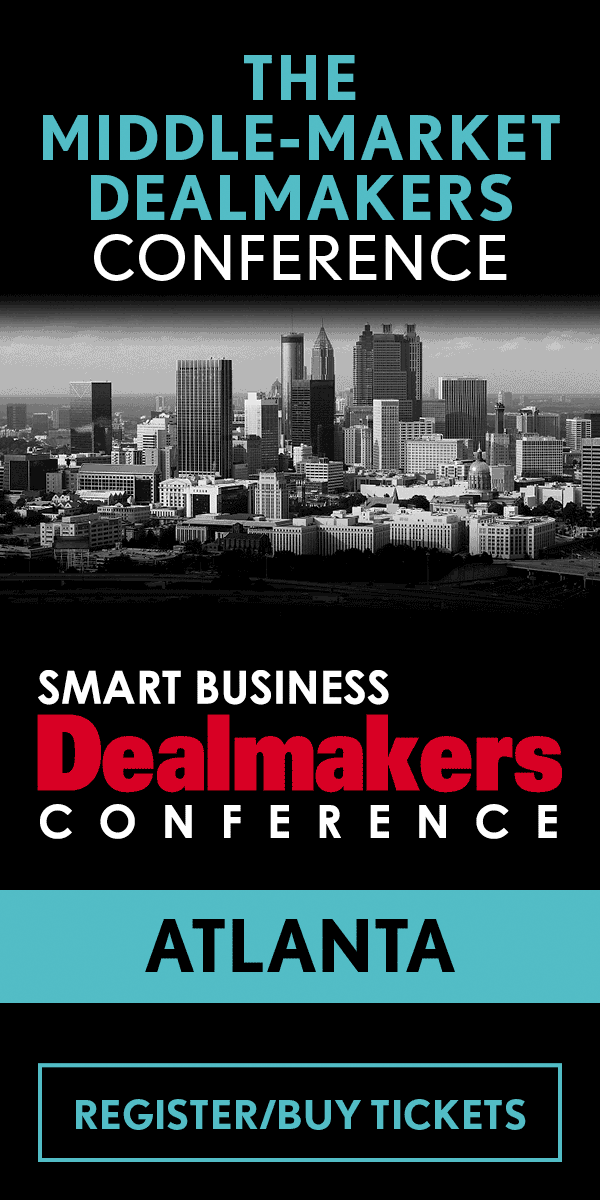For Tom Werner, CEO of Kassel Holdings and Kassel Mechanical, 2023 was an interesting deal year for the business.
“We've had expectations on sellers go up really over what they were in ‘21 and ’22 from a multiple standpoint,” Werner said at last year’s Columbus Smart Business Dealmakers Conference. “At the same time, the senior leverage, what they're comfortable with, has really been cut in half. Traditionally, we would do a couple turns of senior, maybe a little bit of junior or pref, a turn or so of seller just to have some kind of teeth to keep them engaged for transition, and then gap with equity. And what we're having to transition to in conversations now is almost 30 percent rollover equity with the sellers, and trying to figure out how to cover that one to one-and-a-half-turn gap that doesn't exist from the senior side anymore. So, that's been kind of intriguing.”
Another wrinkle, he says, is that there's been a lot of activity, obviously, in their space with private equity firms, which means multiples are staying high, even though there's not a lot of available capital for it.
“Expectations versus reality are pretty far off right now.”
With rates elevated, he says they’ve been stress testing businesses because half of the capital now costs two times more than it did, which makes things a little tight.
“That's why there's other structural changes,” he says. “There's more seller paper, there's more seller roll over; you have to cover the gap both on cash flow and on structure for valuation.”
However, he says they typically try to avoid earnout structures if they can.
“Good or bad, they always end up with somebody feeling like they got shortchanged,” Werner says. “So, we generally try to put our clawbacks inside our seller notes structures or rollover, if they exist, and avoid earnouts structures altogether. There's been a couple of times that the seller really wanted it and we ended up having to accommodate — usually for a valuation gap, or an add-back gap. But traditionally, we try to avoid them and put our clawbacks elsewhere.”
He says the types of businesses that they're looking for, none returned to a steady state after COVID until this past fall. Still, there continue to be novel elements from that time to deal with such as PPP implications and ERC implications, and likely a 25 percent increases in cost of materials or supply chain, as well as massive wage increases.
“It's been tough to cut through all of that stuff and get to what we think is actually the real number versus what the business owners are saying, ‘Well, this is what it would be if it's normal.’ Well, it hasn’t been normal for three years,” he says. “So, that's stretched out everything that we've looked at.”
He says there's been a lot more focus on the management team, especially if there's been newer people injected into the businesses, or if the seller isn't planning to stay and do a longer transition. He says they try to get at least three years post-transaction out of the seller to make sure that the relationships can be handed off, and that the new succession team is intact and understands the business as well as the founder/owner did.
In that same vein, he says they started working with a company to evaluate the individual talents of the management team, using it to test a couple of his company’s internal staff people to give them a baseline for comparison. There’s also been more focus on going to see the sights, sending members of his team to physically look at the business so nothing is taken for granted, which he says has led to longer processes.
After choosing a handful of markets to prospect, they do a market analysis, then look for targets inside that could help grow their footprint.
“And typically, we'll try to buy a beachhead and then fill on the other things that we think that that business needs to fulfill the rest of the strategy for it secondarily,” he says. “The things that we tuck in under it are smaller, the multiples are lower, so we can adjust down our average multiple that way, just as a strategy.”
But since the end of last year, he says they’ve looked more towards strategic tuck-in opportunities, rather than trying to go into a new market.
“With the rest of the variability that we have right now, especially considering all the other structural changes that we have to make, it just seems like it's a lot of different things to be able to fit within our normal strategy,” Werner says. “So, our focus has been on smaller things that fit inside what we're trying to do within a given market, as opposed to taking the beach, so to speak, on a new market, and then continuing to move forward. I think that'll probably shift back by maybe spring or early summer next year. But that's what our tactic has been right now. And everything that we've got lined up right now that's in the pipeline, at least that's imminent, is smaller, that fits that strategy as opposed to trying to move into a new market.”




